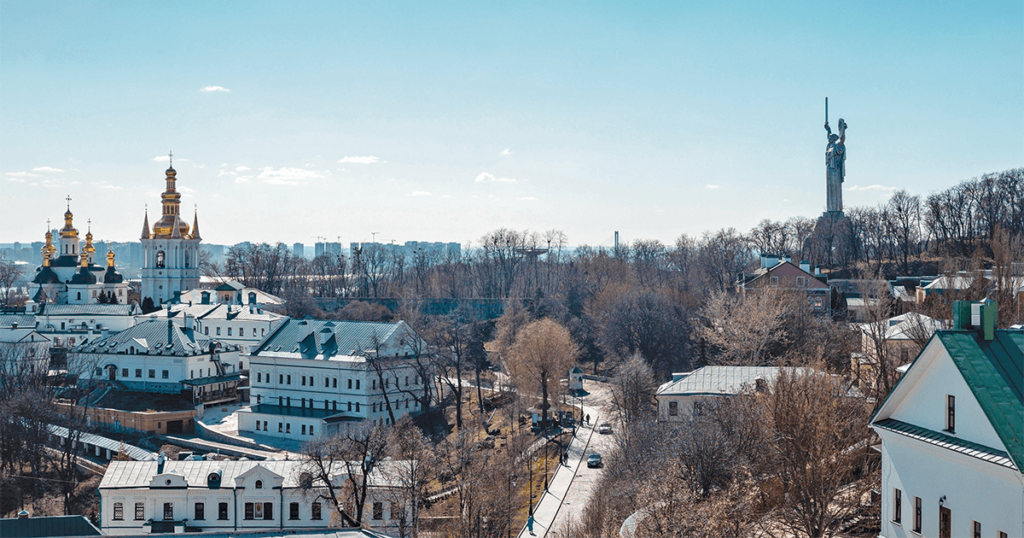Corruption in the Courts
To understand how Ukraine became the center of Trump’s impeachment inquiry, it helps to understand the country’s troubled judiciary.

“Corruption in Ukraine is endemic, correct?” This question and its permutations come up often these days on Capitol Hill, as scores of U.S. policymakers recount the circumstances that led Ukraine to occupy, implausibly, center stage in an impeachment inquiry of President Trump.
While I was in the country last month reporting for the Winter 2020 issue of The American Scholar, I spent time trying to understand how the new president of Ukraine, Volodymyr Zelensky, has been using his unprecedented mandate to tackle corruption, one of the country’s most intractable problems. I quickly zeroed in on his efforts to produce judicial reform. If corruption is the tainted blood that circulates throughout Ukrainian society, keeping it sick, the judiciary is its troubled heart.
Routinely rated as one of the least-trusted public institutions in Ukraine—at its nadir in 2015, only eight percent of Ukrainians trusted it—the judiciary has long been associated with bribery and entitlement. The Communist Party used the courts as a rubber stamp for its politics, shrouding deliberations in secrecy. When Ukraine declared independence from the Soviet Union in 1991, it inherited a legal system that existed mostly in name only. All Ukrainian presidents have paid lip service to the importance of reforming the judiciary to allow for equity, transparency, fairness, and equality, but like many things in Ukraine, the distance between political rhetoric and reality is vast.
Under Zelensky’s predecessor, Petro Poroshenko, the country embarked on its most concerted judicial reform to date, restructuring the Supreme Court, creating a High Anti-Corruption Court staffed with judges who meet stringent integrity standards, and stripping the notoriously pliant Ukrainian parliament of its ability to appoint judges. Still, many aspects of the system were untouched, and some well-intentioned strategies didn’t pan out. For example, following European practice, the role of appointing judges was transferred to the judiciary—yet the approach unfolds differently in Ukraine than it does in, say, the Netherlands. Ukrainian judges have recommended scores of appointees with questionable, if not disreputable, backgrounds. “Self-governance works fine but not when the judiciary is organized crime basically,” says Mykhailo Zhernakov, a former judge in Ukraine’s Vinnytsia region who now heads the DEJURE Foundation, a Kiev NGO focusing on legal reform.
Even after the work of the Poroshenko years, the Ukrainian judiciary remains ripe for influence. The National Anti-Corruption Bureau posts information about its investigations into judicial corruption, creating a kind of catalog of post-Soviet bribery: $150,000 will get you a more lenient sentence in a narcotics case; $10,000 will convert a sentence of imprisonment to probation for counterfeiting money; $5,000 will entice a judge to look the other way regarding the disposal of hazardous waste. Open Court, an NGO in Kiev that collects video recordings of court proceedings around the country, maintains its own rap sheet. Thanks to its online database, you can watch Ukrainian judges shove lawyers, attempt to follow proceedings while hung over and disheveled, and pay more attention to their mobile phones than to oral arguments. Those who challenge this state of affairs can pay a high price: critics have lost their jobs, had their careers sullied, and, like whistleblower judge Larisa Holnyk, endured physical attacks.
Some advocates suggest that the media has overemphasized judicial corruption, thus sinking public opinion. “In 95 percent of cases, it’s alright,” says Zhernakov. “Ivan owes Petro 5,000 hryvnias and you say, yes, you have to give it back. However, with the remaining five percent we have a problem.” It’s that five percent that often involve the most consequential decisions in Ukrainian society.
Earlier this month, President Zelensky’s “turbo-regime” of reform-hungry politicians gave him a new law addressing judicial corruption to sign. Like many reforms adopted under Zelensky, it has strengths and weaknesses. It reboots the commission that examines potential judges’ qualifications, but does nothing about the discredited council that recommends judges for appointment. It halves the number of judges on the Supreme Court, ostensibly to reduce the influence of corrupt judges in its ranks, but articulates no criteria for how judges will be selected for removal. It further integrates independent international experts into the courts’ structures, but leaves untouched the shady District Administrative Court of Kiev, which has jurisdiction over all decisions made in the capital—and effectively all those made by the national government. This court has been behind some of the country’s most suspect decisions in recent years, including the temporary suspension of reform-minded Health Minister Ulana Suprun; the reinstatement of the disgraced head of the State Fiscal Service, Roman Nasirov, after he was accused of embezzling $75 million; and the overturning of the 2016 nationalization of PrivatBank, the nation’s largest bank, cofounded by controversial oligarch Igor Kolomoisky.
“Unfortunately, corrupt judges are useful to every kind of authority,” says Maksym Kostetskyi, an anti-corruption expert and consultant. Zelensky, it appears, is no exception.
Not all of the Ukrainian legal system’s problems can be blamed on the judiciary. Other elements also contribute, especially the prosecutor general’s office, which produced Yuri Lutsenko, the country’s former chief prosecutor, who appears to have conspired with Rudy Giuliani to oust Marie Yovanovitch from her role as U.S. ambassador to Ukraine. In August, Lutsenko was replaced by Ruslan Ryaboshapka, a well-regarded lawyer and government official who will preside over extensive reform of his new department. Zelensky referred to Ryaboshapka as “100 percent my person” on the infamous July 25 call with President Trump. As with the Ukrainian judicial reform situation writ large, only time will tell what that statement actually means.

